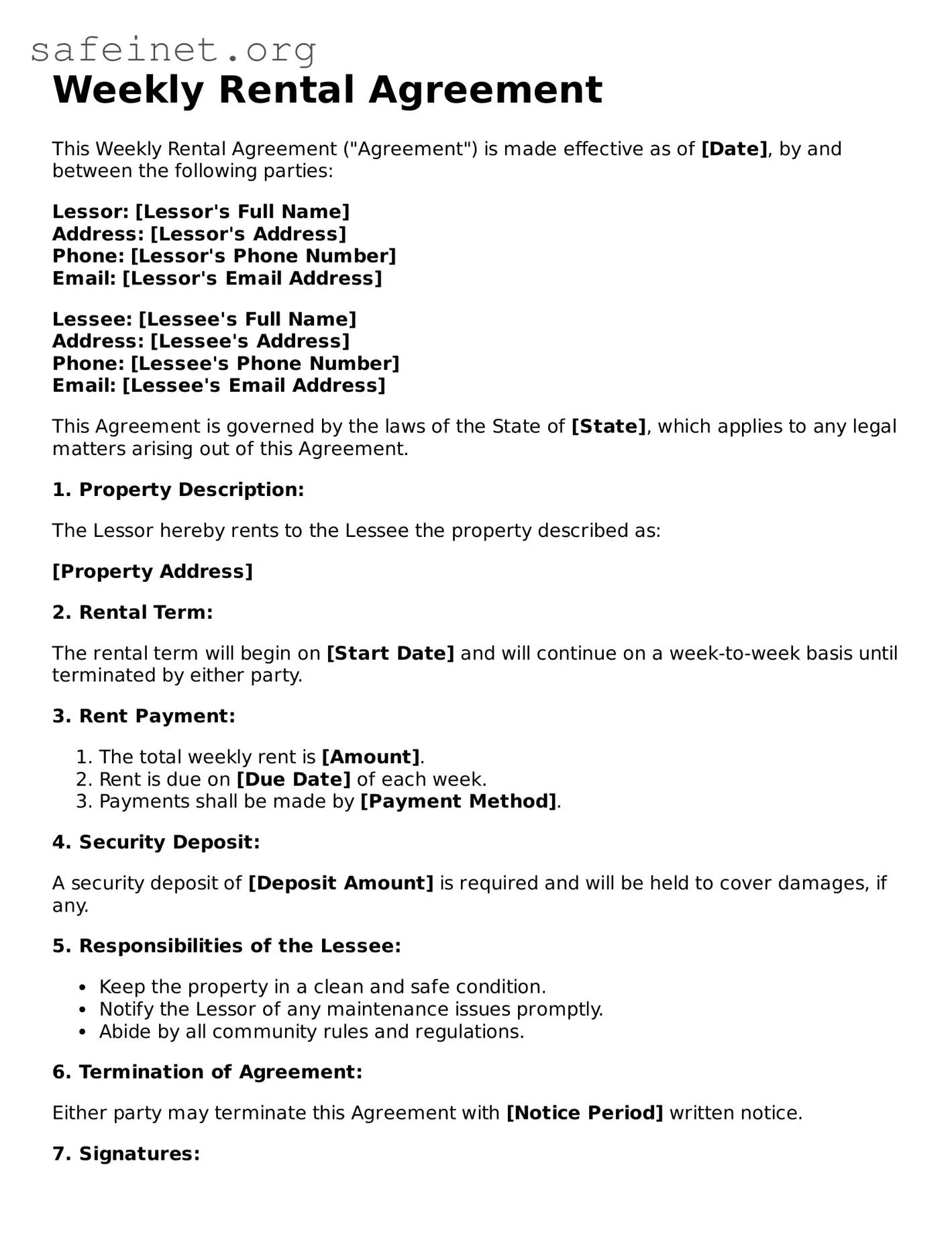What is a Weekly Rental Agreement?
A Weekly Rental Agreement is a document that establishes the terms and conditions between a landlord and a tenant for renting a residential property on a weekly basis. This agreement outlines responsibilities, payment terms, and rules for occupancy, providing clarity for both parties.
Who should use a Weekly Rental Agreement?
This agreement is suitable for landlords who wish to rent out a property or space for short-term stays. It is also beneficial for tenants seeking flexible housing options, such as students or temporary workers.
What details are typically included in a Weekly Rental Agreement?
Commonly included details are the names of both parties, the rental property's address, rental amount, payment due dates, security deposits, and terms regarding maintenance and property use. Rental duration and renewal conditions are also specified in the agreement.
How does one calculate weekly rent?
Weekly rent can be determined by dividing the monthly rental rate by four, though some landlords may choose to base it on local market conditions. It's important to ensure that the amount is competitive yet fair.
Can a Weekly Rental Agreement be modified?
Yes, a Weekly Rental Agreement can be modified with the consent of both parties. It’s advisable to put any modifications in writing to avoid misunderstandings or disputes in the future.
Are deposits required with a Weekly Rental Agreement?
Many landlords require a security deposit to cover potential damages or unpaid rent. The amount of the deposit, along with the conditions for its return, should be clearly stated in the agreement.
What happens if the tenant fails to pay rent on time?
If rent is not paid on time, terms for late fees or penalties are often included in the agreement. It’s important for both the landlord and tenant to understand these terms to avoid disputes.
Can a Weekly Rental Agreement be terminated early?
The agreement should outline the conditions under which it can be terminated early by either party. This often includes notice periods, reasons for termination, and any associated penalties.
Is a Weekly Rental Agreement legally binding?
Yes, once both parties sign the Weekly Rental Agreement, it becomes a legally binding contract. Both the tenant and the landlord are expected to uphold the terms outlined within the document.
Where can I obtain a Weekly Rental Agreement form?
A Weekly Rental Agreement form can be obtained from legal document preparation services, online templates, or local law libraries. It's advisable to use a form that complies with your state laws to ensure its validity.
